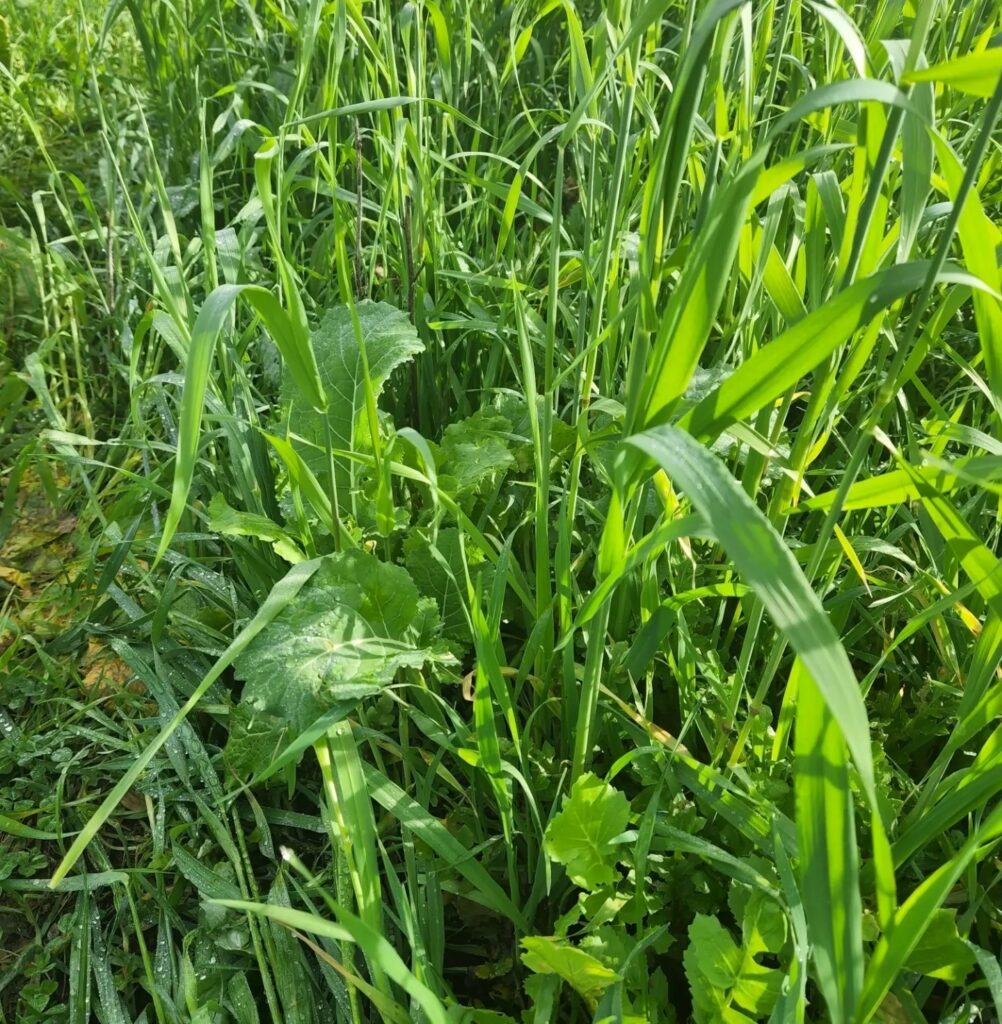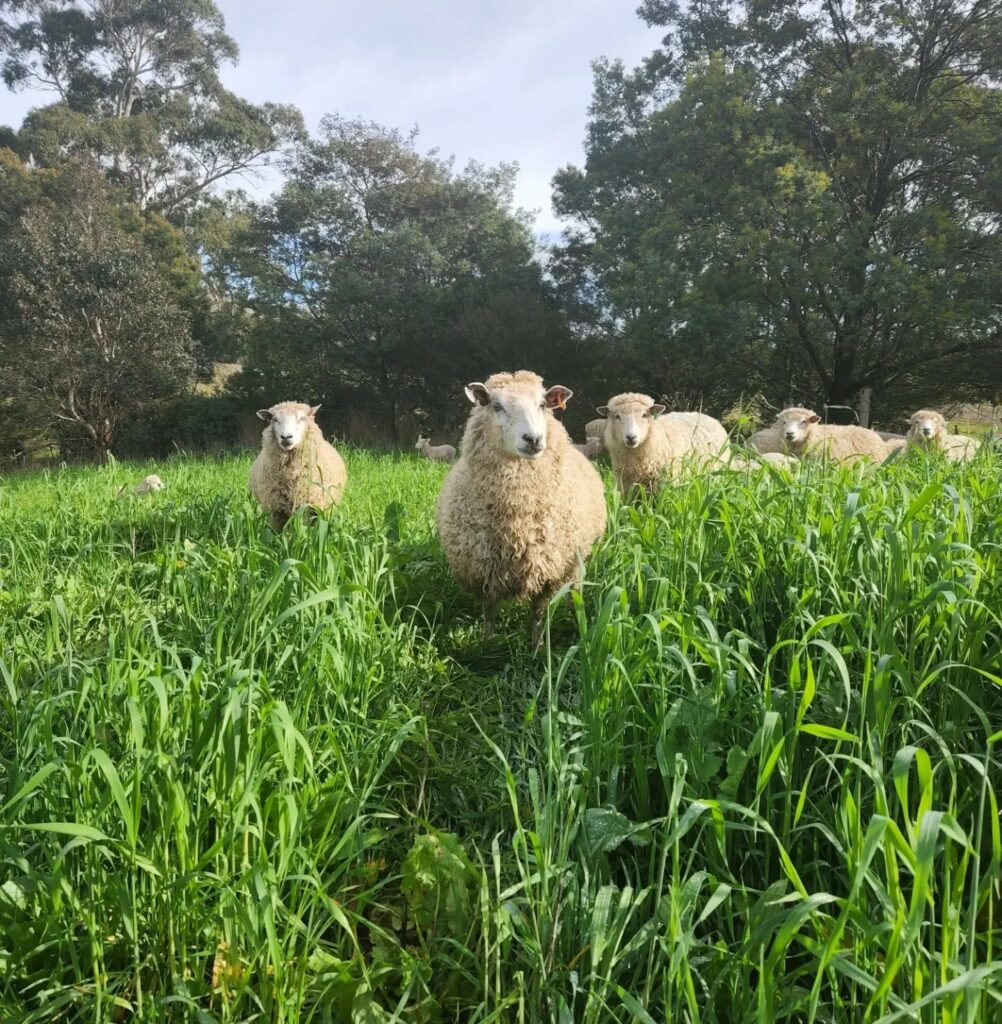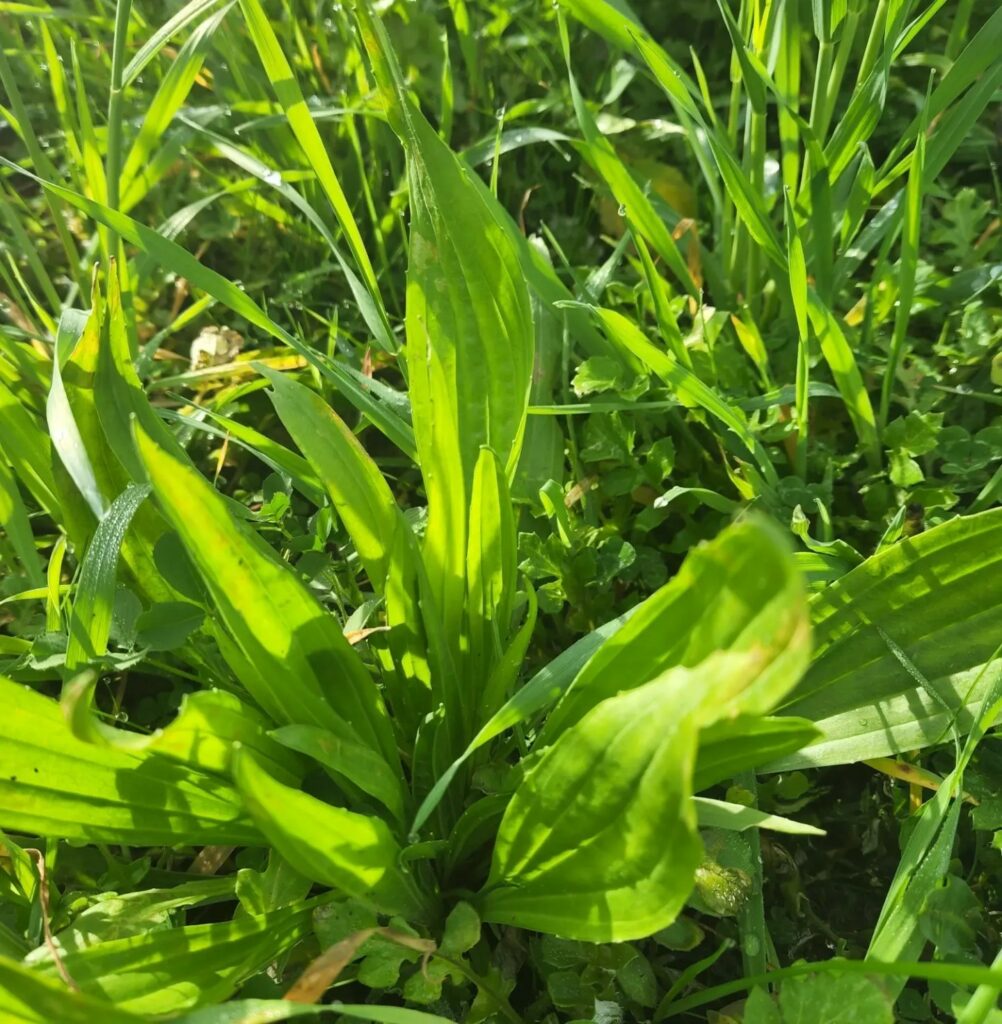When graziers are looking to transition degraded pastures to more sustainable, diverse permanent pastures, forage crops (sown in one year or over several years) can be used to decrease weed burden and prepare soils. Conventionally, simple forage crop mixes have been used in pasture renewal, however increasing attention is being given to multi-species forage crops. The potential benefits of increasing forage crop diversity include improved soil conditions and soil organic matter, greater resilience of forage to the impacts of climate and pests, and higher nutritional values. These improvements are important for reducing erosion risks and securing more reliable pasture productivity. However, sowing diverse mixes does not necessarily translate to diverse plant establishment, particularly when mixes have not been tested to fit specific environmental conditions.
Testing multi-species forage mixes in dryland grazing
As part of the Derwent Pasture Information Network, a three-year project led by NRM South and run by the Derwent Catchment Project, a multi-species forage crop demonstration site was established with a local dryland grazier in the Derwent. The aim was to assess the degree of forage and plant diversity achieved from diverse sowings, and how forage mixes affected permanent pasture establishment. The participating grazier was also interested in learning more about using forage mixes to increase diversity and nutritional values for her animals;
“Traditional simple forage mixes are mainly rapeseed, which is not very palatable to lambs. It also needs insecticide as pests really go for it, so it can be expensive to manage and not great in terms of nutritional values. Having diversity in forage mixes makes a lot of sense to me, to decrease insect pests and most importantly to offer forage diversity to my animals. The concept of diversity is really promising but it’s critical to find out what works in my environment”. Fiona Hume, grazier.
A multi-species summer forage crop demonstration site was set-up on four paddocks across the same farm. Based on an agronomist’s advice, three paddocks were sown with a diverse holistic blend of either nine or twelve different species and one paddock with a simple two-species forage crop mix. Winter mixes were also subsequently sown out across the demonstration sites.
Outcome: overburden of fast-growing annuals
Peter Ball, pasture expert with the Derwent Catchment project, monitored plant establishment within the different forage crop mixes, along with each species’ contribution to the feed-base.
Some practical challenges when using multiple species mixes became evident early on. Both summer and winter multi-species mixes showed that most of the biomass was made up of only a few fast-growing species (in summer: leafy turnip, rapeseed and oats, and in winter: ryegrass and oats). In this case, the multi-species mixes with high diversity of plants offered only low functional diversity in forage grown for grazing and other biological processes.
Peter explained that ‘This is particularly the case where mixes are developed with an emphasis on species diversity without a clear agronomic understanding of each species’ attributes and what role they will play within the developing pasture.‘
Challenging decisions when balancing mixes towards permanent pastures
The demonstration sites highlighted some important management decisions when balancing diverse mixes towards permanent pastures. The fast-growing overburdening ryegrass and cereal created challenges for slower establishing species and highlighted the difficulty of making grazing decisions that accommodate a mix with diverse growth characteristics. Feed on offer needed to be used when feed quality was high and to limit the impact of vigorous growth swamping out other important perennials and sub clover. However, grazing at this time would be detrimental to other species included in mixes, such as annual crimson clover.
‘We decided to graze and sacrifice the minor component of crimson clover for the greater good of the pasture. As an aerial seeder and plant not well adapted to the growing environment, this selection was vulnerable at best. It was more important to manage grazing to favour sub clover establishment and flowering as the most likely mainstay of the legume component in these pastures.’ – Peter Ball
Fiona noted that ‘Some of the early benefits I could see was happy animals feeding in the mixes. I was surprised that grazing seemed to help some of the perennial species. At first, we thought it was only the vigorous plants that established, but now can see a lot more diversity.’
Key recommendations when sowing out multi-species forage crop mixes
Multi-species pasture mixes can play an important role in preparing soils for subsequent sowing out with permanent and diverse pasture, but our findings suggest that producers may run the risk of spending money on highly diverse multispecies mixes without gaining the desired effect of diverse establishment.
Fiona explains that the monitoring really helped her to get some clarity how different species performed. ‘Having Peter come out and monitor the mixes gave us insight on what species did well, and others that we added but never germinated. All this information important for us to come up with a species selection and sowing rates that work in our low rainfall environment”.
More work is needed contrasting more species mixes to identify species that suit the specific conditions of degraded dryland grazing systems. This could be achieved by trialling more simple forage mixes in smaller areas and contrasting resulting species richness and contribution to feed-base to cost of establishment and business as usual.
This project is supported by NRM South through funding from the Australian Government’s National Landcare Program.
All images provided by Fiona Hume.



